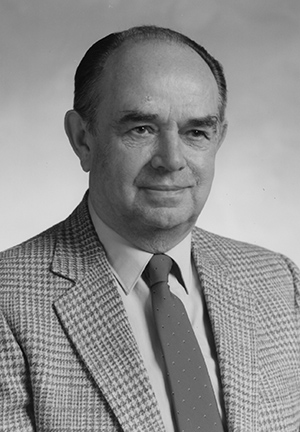Lajos Takács was born on 21 August 1924 in Maglód, a small town 16 miles from Budapest in Hungary. He showed an early aptitude for mathematics, and an interest in numbers. He attended secondary school in Budapest. In 1943 he entered the Technical University of Budapest, and came second in the Eötvös Competition, a national mathematics competition in Hungary. He was taught by Charles (Károly) Jordan. In 1945 he became a student assistant to Professor Zoltán Bay, and his consultant in the Tungsram Research Laboratory, of which Bay was head. He participated in Bay’s famous experiment of 1946 on microwave echoes from the Moon. He took his PhD in 1948 on Brownian motion, under Jordan.
The Research Institute for Mathematics of the Hungarian Academy of Sciences began in 1950, and Takács became a member. He joined the staff of the Lorand Eötvös University in 1953, where he taught probability. He stayed at the Tungsram laboratory until 1955. He visited Poland in 1955 and Austria in 1956; he was awarded the Doctorate of Mathematical Sciences by the Hungarian Academy of Sciences in 1957. He left Hungary in 1958, teaching at Imperial College London and the London School of Economics before becoming Assistant Professor at Columbia University, New York in 1959. He became a Professor at the Case Institute of Technology in Cleveland, Ohio (later Case Western Reserve University) in 1966, from where he retired in 1987. He died on 4 December 2015, aged 91.
Takács wrote over 200 papers, and several books. His early interests shifted to queueing theory, and he was one of the main contributors to the rapid development of the field in the 1950s. His 1955 paper treating waiting-time problems by reduction to Markov processes was very influential and has become a classic. His book Introduction to the theory of queues appeared in 1960. This was followed in 1967 by his book Combinatorial methods in the theory of stochastic processes, largely on applications of ballot theorems to queues, following his 1965 paper on this theme.
Takács introduced the idea of regeneration point in his 1955 paper, and this led him to his functional equation for the Laplace transform of the busy period in an M/G/1 queue. He also introduced the idea of the virtual waiting time in a queue (the time a customer joining at time t would have to wait to begin service, or service backlog). The analogy between service demand being stored in a queue and water being stored in a dam led Takács to his studies of dams in 1967–68.
The relevance of fluctuation theory of random walks to queues was realized by Lindley in 1952, and was taken much further by Spitzer in 1956–57, with his introduction of Spitzer’s identity and the relevant Wiener-Hopf equation for the limiting waiting-time distribution. Takács worked extensively in this area in a series of studies in the period 1970-78.
Takács turned in 1979 to probability on groups. Part of his motivation was the Ehrenfest urn model, introduced to account for macroscopic irreversibility but microscopic reversibility in statistical mechanics. In addition to random walks on groups, he also worked on random walks on polytopes, regular graphs and other geometric objects. His research and expository writing in this area revealed a deep knowledge of group representation theory.
Other interests of Takács included, as well as Brownian motion, branching processes, enumerative combinatorics, empiricals in non-parametric statistics, and random graphs. He also had a lifelong interest in the history of mathematics, and his writings show an extensive knowledge and appreciation of the mathematical literature.
Takács was a founding member of the editorial boards of the Applied Probability Trust’s journals Journal of Applied Probability and Advances in Applied Probability. He was elected to membership of the Hungarian Academy of Sciences in 1993. He was awarded the John von Neumann Theory Prize in 1994, and the Fellows Award of the Institute for Operations Research and Management Science in 2002. He supervised twelve PhDs, at Columbia and Case.
Lajos Takács was a very gifted, versatile and prolific mathematician, whose work has had a lasting impact on probability, particularly applied probability and queueing theory, but also on fluctuation theory and random walks on groups and other algebraic structures. He was greatly valued by his fellow probabilists, not only for his wide knowledge but also for his human qualities. He was a kind and friendly man – a scholar and a gentleman.
In 1959 Takács married Dalma Horváth; they had two daughters, Judith and Susan.
—
Written by N.H. Bingham, Imperial College London

Comments on “Obituary: Lajos Takács, 1924–2015”